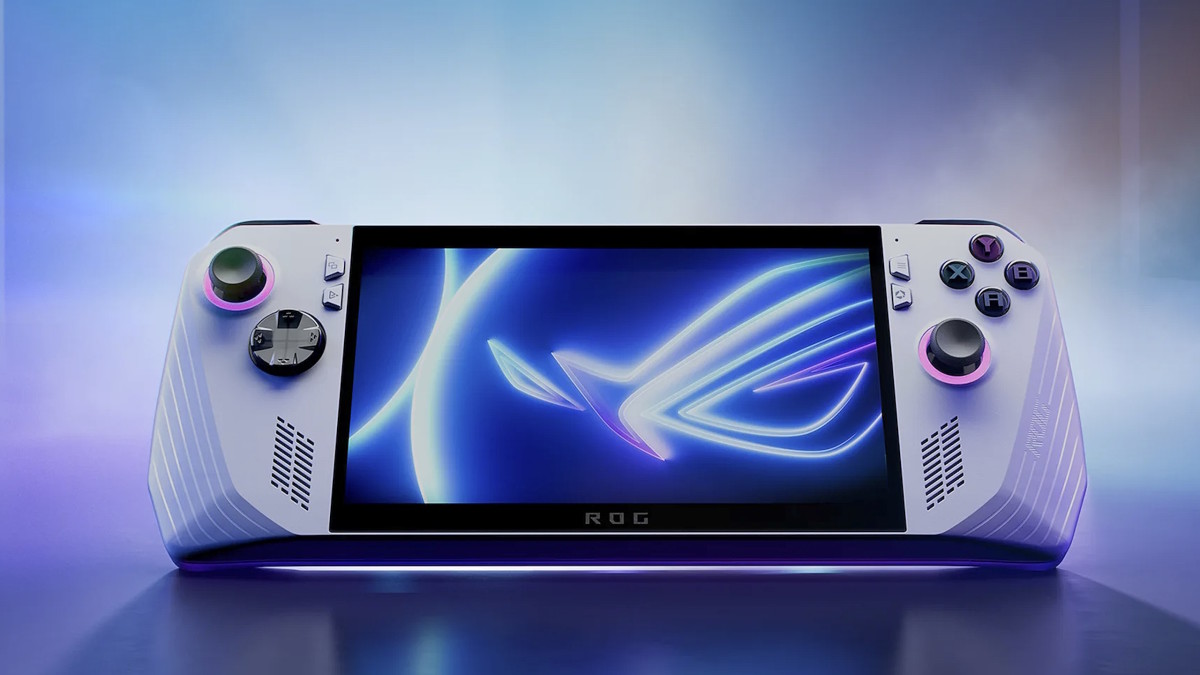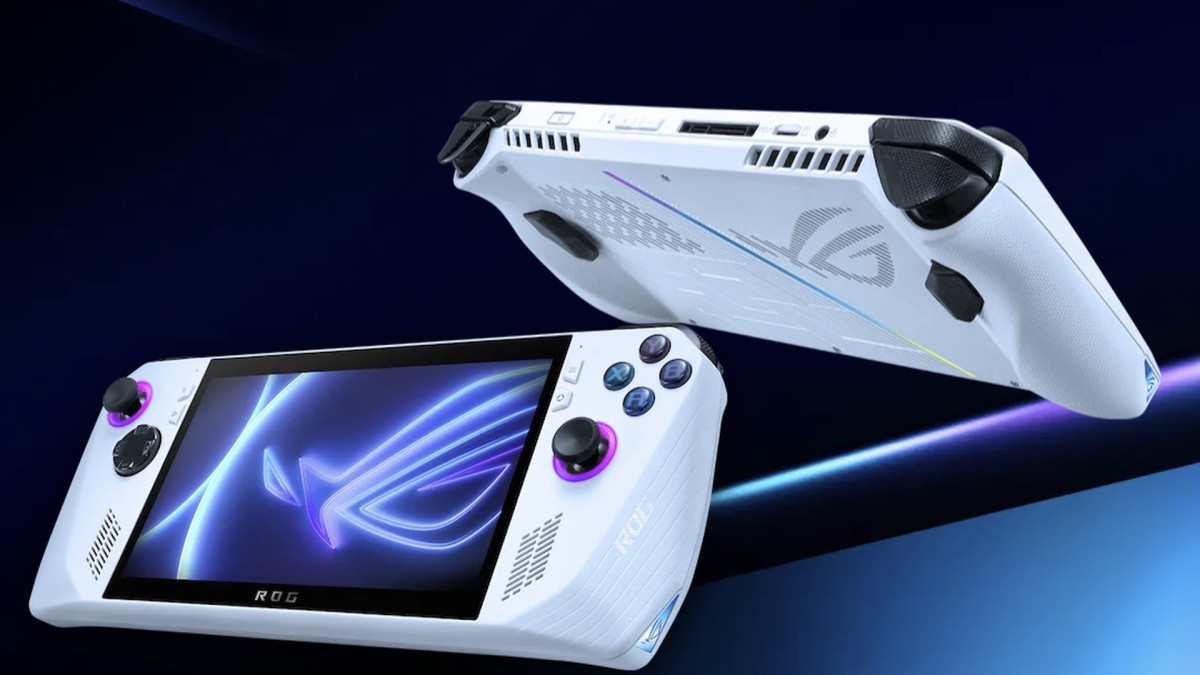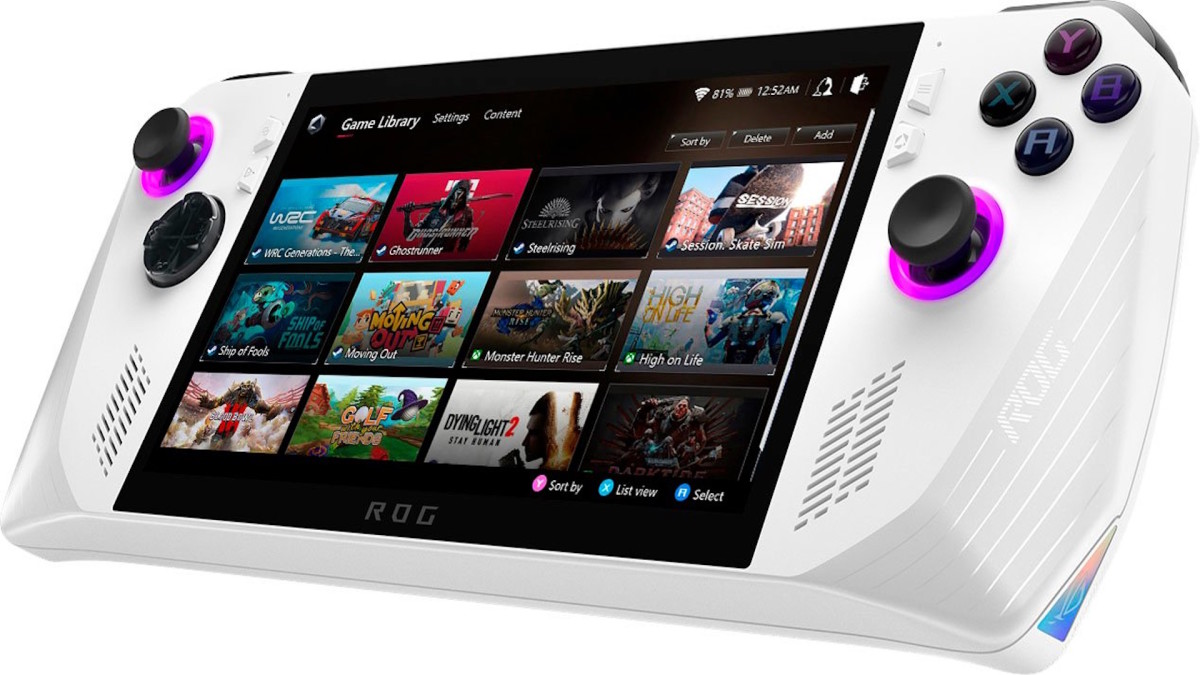Asus ROG Ally Z1 Extreme review: A powerful Steam Deck alternative

The Arena Media Brands, LLC and its partners may receive compensation for links to products and services on this website.
Five months after Asus launched the Asus ROG Ally, the handheld gaming PC is finally in a position to pose a real challenge to Valve’s Steam Deck. We spent three weeks with the Asus Ally Z1 Extreme, the console’s slightly more expensive, more powerful version, and Windows 11 quirks and odd layout design choices aside, we came away impressed with how it handles some of the more demanding modern PC games.
Depending on what you’re after, the Asus Ally isn’t just a good Steam Deck alternative. It’s even better.

The Asus ROG Ally is slightly smaller and lighter than the Steam Deck, but a little chunkier than the Nintendo Switch. It has four ABXY face buttons, a proper eight-way direction pad, two analog sticks, and four shoulder buttons. Two customizable macro buttons live on the back, and while they come with pre-determined functions, you can also program combinations with other buttons to perform tasks such as recording footage or mimicking keyboard functions.
The lack of mouse tracking pads means Asus could position face buttons and analog sticks in ways that feel more natural and easier to reach. I find myself cramping my right thumb to press the Steam Deck’s “A” button and reaching too far with my left thumb to move the left analog stick, but working the Ally feels just like using an Xbox controller.
The tracking pads’ absence does make browsing a little cumbersome, admittedly. I grew accustomed to using the right stick as a mouse more quickly than I expected, but using the touchscreen is almost always easier unless you’re selecting a file for something.
There are a few strange design choices, though. The primary vent sits behind the microSD card slot, USB-c slot, and headphone jack, and the area gets pretty hot while the unit is plugged in or running a demanding game. I never encountered any damaged hardware or accessory issues, even when it sustained high temperatures for 30 minutes or more, but it’s also a concern I’d rather not have at all.
There’s also no regular USB port – only one 3.2 USB-c – so you’ll either need Asus’ gaming dock or a display that’s USB-c compatible if you want to hook the Ally to something else.

Another minor annoyance is the volume button placement. The power button is within easy reach on the right side, but the volume buttons are in the middle. Unless you have longer fingers, you can’t easily reach them to adjust the volume without letting go of one side of the unit. It’s an odd choice.
Less odd is the operating system. It runs on Windows 11 instead of Linux, and while that’s a sticking point for some, the benefits far outweigh the negatives for less tech-savvy people like me. Sure, it comes with some unnecessary software – thanks, but I don’t think I’ll be using Teams on my handheld gaming PC – and the virtual keyboard occasionally doesn’t work with some programs.
However, you can run pretty much anything on the Ally without jumping through hoops. I installed Genshin Impact and Honkai Star Rail, Final Fantasy XIV, Alan Wake Remastered, and a few games from my Xbox library with just a few quick clicks – no workarounds or third-party programs required. There’s even a version of Emudeck that works on the Ally if you’re keen on using it for emulation.
Armoury Crate is Asus’ interface, where you can group all your games across different launchers together in one place, adjust the system’s performance, tinker with bindings, and manage your updates and media. It’s a convenient piece of software that benefits from several months of updates and overhauls.
The bugs, crashes, and glitches that plagued it when the Ally launched earlier in 2023 are all pretty much gone or being smoothed out. I encountered two in the first few days of testing: a serious issue where the system crashed if it entered sleep and an annoying bug where the audio glitched out after resuming from sleep mode. A few updates fixed those, and I haven’t run into any major problems since with the review unit or the one I purchased for my own use.

Granted, Armoury Core isn’t exactly great about telling you when an update is available, but at least Asus is still actively improving its software.
The Ally features a 7-inch IPS panel, the same as the Steam Deck, though what Asus put inside the machine sets it apart in a pretty big way. The Ally Extreme comes with an AMD Extreme Z1 CPU, with eight cores and 16 threads, an RDNA 3 GPU, and 16GB of RAM. What that translates to in normal speak is a respectable amount of power and a noticeable step up from what the Steam Deck can achieve.
The Ally has four performance modes: 15-watt, 20-watt, 25-watt “turbo,” and a 30-watt turbo that you can only use when the unit is plugged into a power source.The 15 and 20-watt options are fine for older or less demanding games, but if you’re playing any AAA game from the past five years or so and want the best performance, you’ll likely spend most of your time using turbo mode. Just bear in mind that you won’t hit 60fps on high settings. Using the Ally is similar to choosing performance or fidelity mode on modern consoles. Since the standard resolution is full HD (1920x1080) with a 120Hz refresh rate, though, games tend to look better and perform better even on low or medium settings than they do on the Steam Deck.
I ran Cyberpunk 2077’s 2.0 update at high settings on the Ally’s turbo mode and maintained 40-45 fps even in some of Night City’s busier areas. It struggled a bit more with Red Dead Redemption too, though it never dipped below 30 fps even with medium and high settings, while Elden Ring fluctuated a bit unpredictably. Outside areas in the open world jumped between 35 fps and 50 fps on high settings, but stayed between 40 and 50 fps in enclosed areas, like the Academy of Raya Lucaria. This result isn’t entirely surprising, though, since Elden Ring struggles to hit 60 fps even on high-end desktop PCs.
I even managed to play through Act 3 in Baldur’s Gate 3, albeit at sub-30fps.I usually can’t notice framerate fluctuations unless it dips to 25 fps or lower, but if changes bother you, you can set the framerate limiter at 30 fps before launching a game and not have to worry about it again.

I only noticed a slight difference between the 25 and 30-watt options in these and other tests, but there’s one big downside to using the 25-watt turbo mode: battery life. Like the original Steam Deck model, the Asus Ally burns through its battery life pretty quickly. I usually averaged about 90 minutes playing Genshin Impact, Cyberpunk 2077, or Red Dead Redemption 2 on high settings and turbo mode.
That seems antithetical to the idea of handheld gaming, but it’s more of a general problem instead of an Ally-specific one. With Valve working on a more powerful Steam Deck, and Nintendo reportedly bumping up the Switch 2’s power, I doubt we’ll see a solution to the problem without serious ergonomic compromises anytime soon.
Should I get Asus ROG Ally or Steam Deck?
The Steam Deck is a better choice if you don’t mind lower graphics quality and performance and want:
- Greater customization
- A more open platform you can tinker with
- A less expensive way to play your Steam library on the go
The Asus Ally is better for people who need:
- Convenience
- Greater stability
- An easy way to play games from multiple libraries
- Better performance and visuals
Where to buy Asus ROG Ally
You can purchase the Asus Ally on Amazon, from Best Buy, or on the official Asus eStore website.
